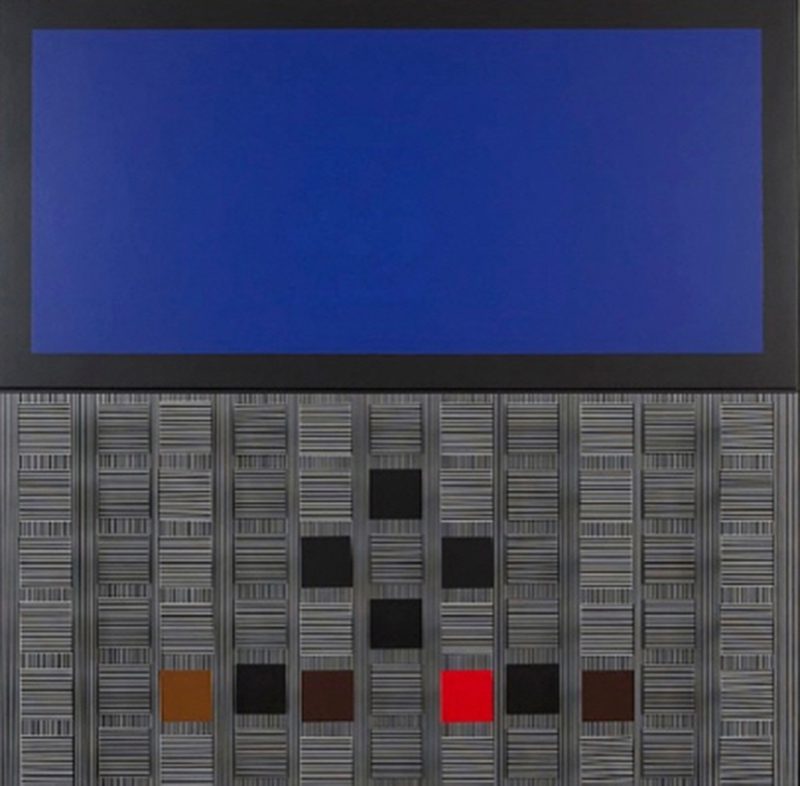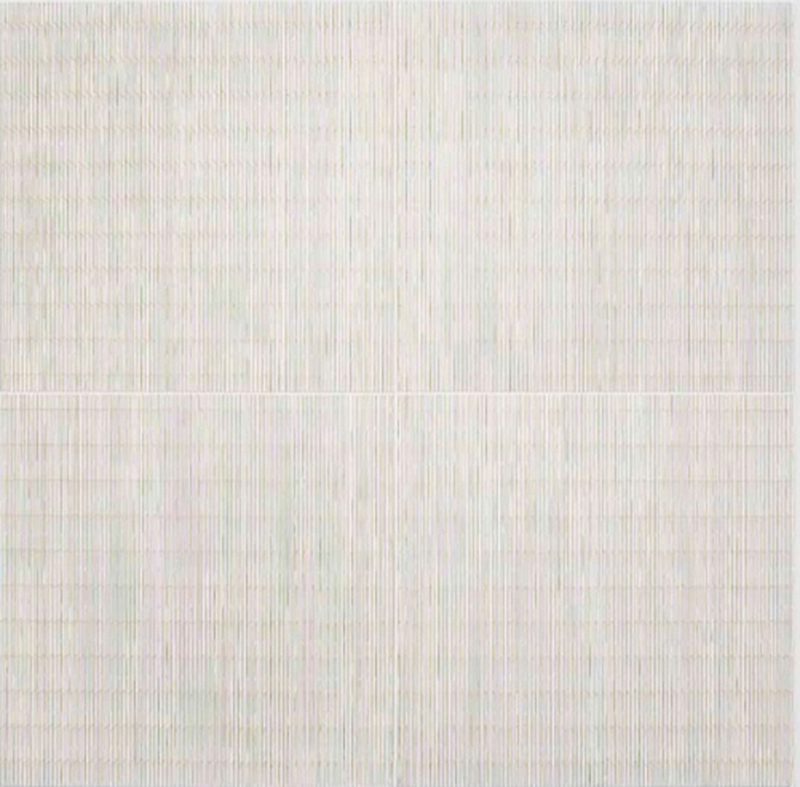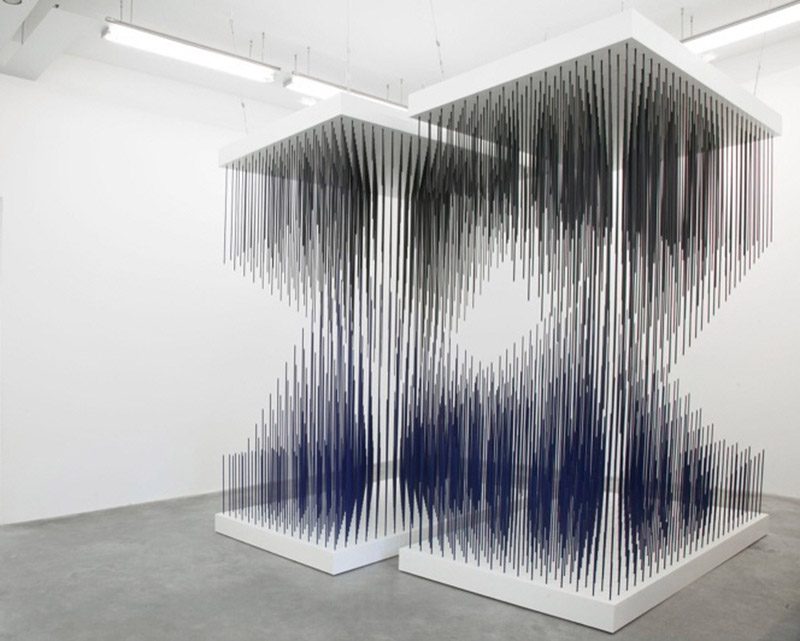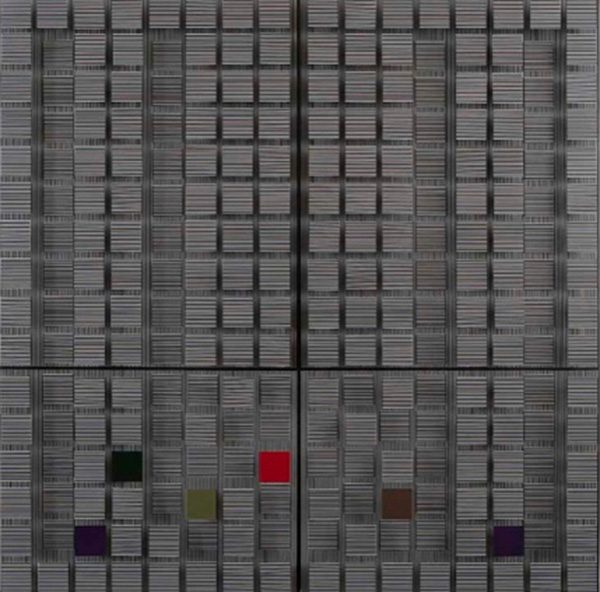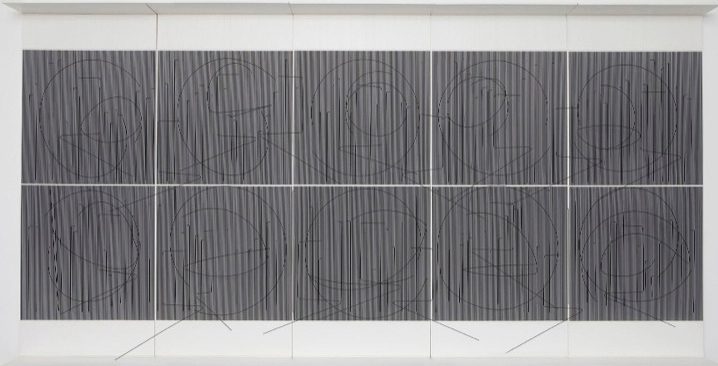ART CITIES:Paris & N.York-Jesús Rafael Soto
“Chronochrome” is a double exhibition dedicated to Jesús Rafael Soto (1923-2005), held simultaneously in Paris and New York spaces of Gallery Perrotin. Organised in collaboration with the artist’s estate and curated by Matthieu Poirier, the exhibition will present some sixty works from his estate or from institutions, made between 1957 and 2003. For Soto, colour is experienced in and for itself only in the real time and space of perception.
By Dimitris Lempesis
Photo: Gallery Perrotin Archive
The term “chronochrome” is used less in its original sense (it was a process for making color films, invented in 1912) than to describe the kinetic exploration of the monochrome. Soto was a close friend of Yves Klein, but in Soto’s work, pure color leaves the stable support of the surface in order to become a vibratory phenomenon. Born in Venezuela in 1923. He trained at art school in Caracas and came to Paris in 1950, which remained his base for the rest of his life. His work developed gradually from his first Parisian pieces, created partly under the influence of the Neoplasticism of Piet Mondrian and the theories of Laszló Moholy-Nagy on light and transparency in his writings Vision in Motion. In the 1950s he conceived his first “optical vibrations”, the constituting principle that would remain active in almost all his future work: a play of grids on two distinct levels, a few cm apart. The first of these levels is irregular and transparent and constituted by either silkscreened motifs or painted rods, and the second, behind it, has fine painted vertical lines in black and white. This relation between foreground and background is crucial: visually, it generates an undulating, changing effect (moiré) every time the beholder’s viewpoint shifts, even if just a little. From then on, Soto abandoned two-dimensional painting in favor of these “reliefs” in which that interstice between the two layers plays such an important role, and for sculptural pieces in which a “rain” of colored rods or threads create a complex immaterial effect that contrasts with the simplicity of the material elements, just as the rhythmic mobility of the vibration belies the neutrality of the color. The properties of the work thus vary with the angle from which it is viewed, creating a motor effect in the observer and integrating the elasticity of perception. This dynamic quality was often misunderstood in Soto’s early work, as it was in the art of Heinz Mack and Bridget Riley. Soto was alternatively heralded as the hero of “kinetic art” or “op art”, a status he regularly rejected as he sought to establish his singularity.The modest dimensions of the older works certainly do not mean a lack of visual and spatial impact, however. On the contrary, as Jean Clay affirmed, “through the play of stripes at various angles,” Soto obtained“ surprising effects of unequal weight, as if each sheet corresponded to a different planet, as if each series of stripes was responding differently to the laws of universal gravity. A step to one side sets in motion a whole play of divergent levitations, creating the disturbing sensation that contradictory physical rules are prevailing simultaneously over the micro-space that Soto has managed to trap. The works brought together at Galerie Perrotin in Paris and New York may disconcert, disorient and seem elusive. The eye and also the body in the case of one Penetrable is subtly trapped, wandering endlessly in spaces that oscillate between painting and sculpture, object and image. In the way it enters our perceptual space and refuses to be fully grasped.
Info: Curating: Matthieu Poirier, Paris: Galerie Perrotin, 76 rue de Turenne, Paris, Duration: 10/1-28/2/15, Days & Hours: Tue-Sat:11:00-19:00, Ν. York Galerie Perrotin, 909 Madison Avenue, New York, Duration: 15/1-21/2/15, Days & Hours: Tue-Sat: 10:00-18:00, www.perrotin.com
